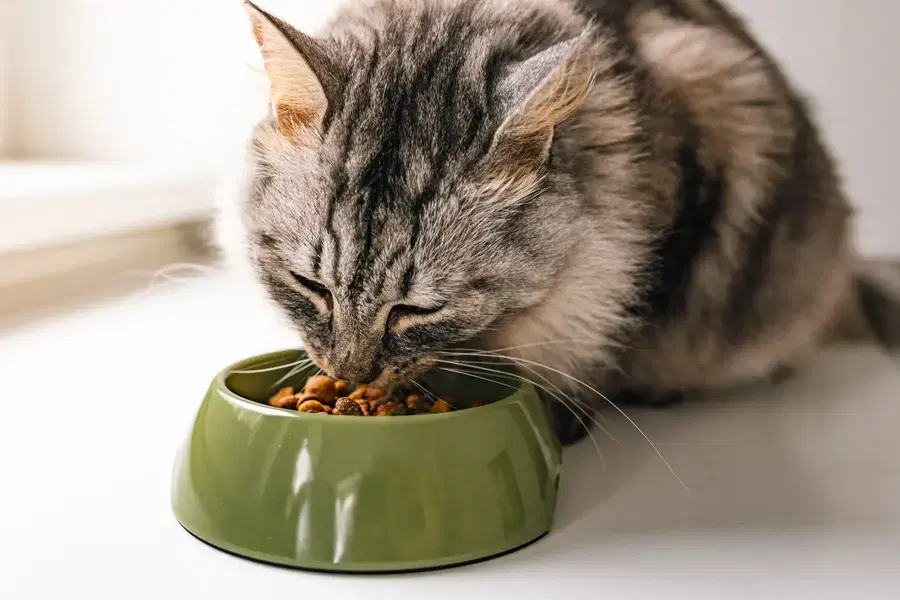With 310 distinct forms and over 1300 documented names, pasta stands out as one of the most beloved dishes worldwide. This carb-loaded delight has secured a permanent place on dinner tables across the globe. As a cat owner, you may observe your feline companion casting curious glances at your bowl of spaghetti.
Pasta might not be the ideal food choice for your cat, but we recognize the temptation to share your favorite Italian delicacies with your feline friend. That's why we're here to provide you with a few tips and methods for feeding pasta to your cat. In this article, we'll cover how much pasta you can give your cat and how often. Keep reading for the details!
Do Cats Like Pasta?
Similar to bread, the aroma and texture of pasta can capture a cat's curiosity. The sound of boiling water or the clinking of utensils might entice them to come closer, as cats often display a keen interest in the food their humans are enjoying. However, appreciating a particular food doesn't automatically make it suitable for their consumption. It's essential to grasp the nutritional value and potential risks associated with feeding a cat pasta.
Is Pasta Good for Cats?
Pasta is a good source of carbohydrates, which are the human body's main source of energy. It is also a good source of protein, fiber, and several vitamins and minerals, including iron, magnesium, and phosphorus.1
One cup of cooked pasta contains about –
Calories – 220
Protein – 8 grams
Fiber – <2.5 grams
Carbohydrates – 43 grams
Additionally, it also contains small amounts of several vitamins and minerals, including iron, magnesium, and phosphorus. And on top of all these, if you add mushrooms, eggs, tomatoes, etc. it can add to the overall nutritional value of the meal.
However, these nutrients can be extracted by the human digestive system. Can a cat's digestive system process them as well?
Health Benefits of Pasta for Cats
Cats have a dietary need for rich meat-based proteins. Pasta should never make up a large portion of your cat's diet, pasta can't meet all of their dietary needs. It lacks the essential nutrients crucial for a cat's well-being. While certain types of pasta can offer limited amounts of protein and some B vitamins, and whole-grain pasta could contribute fiber which support digestive health to a certain extent, the benefits pale in comparison to what a well-balanced feline diet should provide. If you are looking to switch your cat's food to better meet their nutritional needs, here is a list of the best cat foods.
What Are The Risks of Feeding a Cat Pasta?
Furthermore, pasta can pose potential harm to your cat. Many pasta dishes contain ingredients that are detrimental to feline health. Common additives like onions, garlic, and chives, often found in pasta sauces and seasonings, can be toxic to cats. Even small quantities of these ingredients may lead to serious health issues, including anemia and kidney damage.1 If you decide to let your cat try pasta, make sure that it is fully cooked and plain. Do not give your cat pasta that has been seasoned with salt, or spices, or has been flavored with pasta sauce.
How Much Pasta is Okay for Your Cat?
The first time you let your cat try pasta, start with an extremely small portion about the size of your fingernail. Then observe your cat's response. Look out for any signs of an allergic reaction or an upset stomach. Even if your cat seems to enjoy the pasta, refrain from increasing the amount, only giving your cat 1 - 2 small pieces every once in a while.
How to Feed Pasta to Your Cat:
If you really want to give your cat pasta, here are a few tips on how to prepare the pasta for them to eat.
Keep it Simple: Opt for plain pasta without ingredients like garlic, onions, excessive salt, or any potentially harmful seasonings. These ingredients can upset your cat's stomach and some of them are toxic to a cat.
Never Give a Cat Raw Pasta: Raw dried pasta can be difficult for a cat to digest. If you are giving your cat fresh homemade pasta, it is still important to cook it first. The cooking process helps eliminate potential health hazards associated with raw dough.
What Can Happen if Your Cat Eats Too Much Pasta?
If your cat consumes an excessive amount of pasta, look out for signs of an upset stomach. If you observe any of the following symptoms, contact your vet immediately:
Diarrhea
Lethargy
The carbohydrates and gluten present in pasta can pose challenges for a cat's digestive system, potentially leading to nutritional imbalances.2 Due to the lack of sufficient nutritional content in pasta, monitoring your cat for these symptoms is essential.
Conclusion
While pasta can be a delightful dinner choice for humans, it's important to recognize that it doesn't hold the same nutritional benefits for your cat. Feeding pasta to your cat can potentially lead to health issues.2 So while you can give your cat a few pieces of plain pasta every so often, it might be better to opt for cat-friendly treats that have more nutritional benefits. Here are a few fruits and vegetables that your cat might enjoy.

I've had the privilege of immersing myself in the realm of pet safety. As the owner of an energetic mini golden doodle, I know just how stressful being a pet owner can be. I am dedicated to ensuring our beloved pets enjoy a life brimming with good health.
Czerska, Paulina. “Can Cats Eat Pasta?” Noble Veterinary Clinics, May 14, 2025, https://noblevetclinic.com/blog/can-cats-eat-pasta.
Yosry, Sarah. "Can Cats Eat Pasta?" Modern Vet, Oct. 20, 2024, https://modernvet.com/can-cats-eat-pasta/.
The information presented in this article is for educational and informational purposes only and does not constitute or substitute for the advice of your veterinarian.












